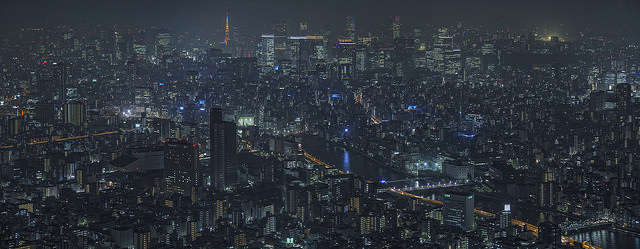9/15/2015 by Alisha Pegan
As the plane descends for landing, what is your first thought when you peek out the airplane window and take in the countless lights, cars, and buildings living below?
A common reaction is “WOW. There are so, so many!”. Yes, so many things and people buzzing about and taking up resources, water, energy, human capital. So, what feeds it all? Where does the supply begin and where does it end? And in the perspective of sustainability: is there a way to make it full circle? Is there and could there be a self-sustaining megacity?
This question is a global concern. The WorldBank statistics indicate that currently 54% of the global population lives in urban areas and by 2030 it will increase 66%. As urban density increases, county and city governments are investigating and applying strategies to manage the people, as well as their short and long term needs, while providing a high quality of life. Navigating the intercept of quality of life and sustainability on a city-wide level can provide systematic solutions, such as livability, green infrastructure, and resilience. Various megacities will serve as case studies elaborating best and worst cases for different mitigation and adaption strategies, and since these diverse solutions need diverse input from politicians, citizens, intellects, and artists, there will also be investigations of why the strategies may or may not work from social, environmental, and economic factors.
